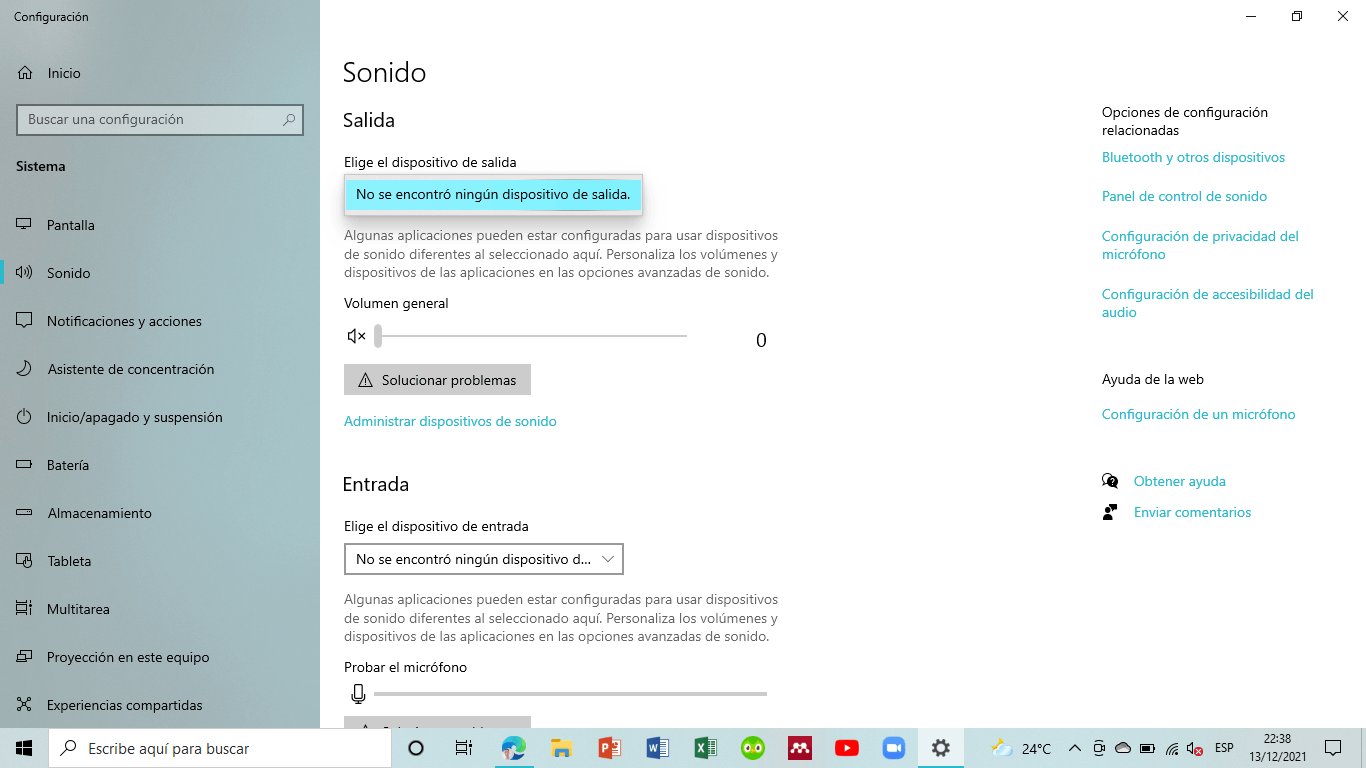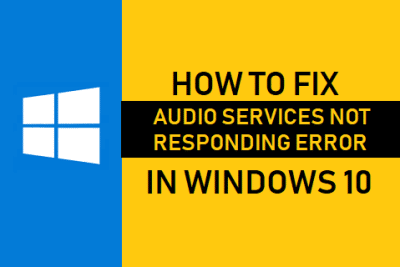- The most common cause is an incorrect or outdated audio driver, sometimes installed by Windows Update.
- HDMI/DisplayPort audio may override your speakers as the default output, generating the prompt.
- Realtek requires specific settings (front panel detection, AC97/HD Audio, boot manager).

Which Windows It's a real pain to get the message "No audio output device" especially when you need sound right away. Fortunately, the error can usually be resolved with clear actions: from checking basic connections to reinstalling drivers, using the system's own diagnostic tools, and, if necessary, restoring Windows to a previous point.
In this guide, we've compiled and reorganized all the solutions you'll see scattered across websites and forums (Windows 11/10/8/7), and added clarifications so you don't get lost. We explain what the warning means (the speaker icon usually displays a red cross), why it occurs, how to diagnose it, and the most effective fixes, including options for Realtek and HDMI/DisplayPort drivers, and using tools like the Windows Troubleshooter, Driver Booster, and audio file repair when the problem is the file itself.
What does “No audio output device” mean?
This warning indicates that Windows does not see any device capable of playing sound, either because it does not exist, is not enabled, does not have a driver, or is blocked by settings. You'll recognize it because a red cross appears on the speaker icon in the taskbar, and when you hover over it or open the sound settings, you'll see warnings like "no output devices found" or "no audio output device is installed."
The message does not distinguish whether the failure is physical (cable, jack, Bluetooth) or logical (drivers, services, profiles). hardware, changes by Windows Update). Therefore, it is advisable to follow an order: check the external, verify services and devices, and then act on drivers and configurations.
Common causes of error
- Outdated, incorrect, or uninstalled drivers (including Realtek, NVIDIA/AMD/Intel Display Audio for HDMI/DP).
- Disabled or conflicting services and devices (default device change, front panel detection, AC97/HD Audio profiles).
- Faulty connections: cables, poorly connected jacks, incorrect ports, or failed Bluetooth pairings.
- Interference via HDMI/DisplayPort if the system has output the audio from the monitor/TV.
- Windows updates that install the wrong driver (e.g., Intel/Realtek) or change settings.
- Faulty hardware: damaged sound card or faulty front panel.
First checks: the basics that rule out false problems
Before touching controllers, make sure the hardware and audio levels are correct. It's fast and saves time if the problem was outside the system.
- Volume & Power: Check that the system, app, and device volumes are all up, with no mutes.
- Physical connections: Check the wiring, use the correct jack (green for headphones/speakers, red for microphone), and try other ports.
- Cross-test: Connect other headphones or speakers to rule out peripheral failure.
- Bluetooth: Check pairing and that the A2DP profile is operational if you are using wireless.
Software solutions in Windows: from less to more
1) Update the sound driver
An outdated or corrupted driver is the most common cause; updating it often restores audio within minutes. Open “Device Manager” from search, expand “Sound, video and game controllers”, right-click on your audio device and choose “Update driver” to search drivers automatically.
2) Run the audio troubleshooter
The wizard detects disabled services, incorrect devices, formatting issues, and broken settings that you can't see with the naked eye. In Windows 10, right-click the sound icon and select "Troubleshoot audio problems." In Windows 7/8, Control Panel > Troubleshooter > Playing Audio.
3) Uninstall and reinstall the driver
If the update continues, reinstall the device so that Windows detects it clean. En Device administrator > Sound, video and game controllers, right-click the problematic device > "Uninstall device" and select "Delete the driver software for this device." Restart your PC and let Windows reinstall it.
4) Disconnect and reconnect the output device
A reconnect forces the jack to be rededicated, renegotiates the Bluetooth profile, or changes the enumeration. USB. Unplug, wait 10-15 seconds, and plug back in; try other ports or cables if possible.
5) Add legacy hardware
If the system doesn't recognize an older device, forcing the installation as "legacy hardware" may save the day. In Device Manager, select "Action" > "Add Legacy Hardware" > "Next" > "Automatically search for and install hardware." If nothing is found, repeat and manually select "Sound, video and game controllers," select the manufacturer/model, and complete. Then, enable the device if it appears disabled.
6) Check hardware and services
If there are no signs of life from the device, make sure it's not a physical problem or downed audio services. Check cables and pairings, and verify that the Windows audio services are running. If everything is correct, continue with the output settings.
7) Disable audio via HDMI/DisplayPort if not used
When you connect a monitor/TV via HDMI/DP, Windows may choose it as the default output and hide your speakers or headphones. On the Playback (Sounds) tab, right-click on the HDMI device and select “Disable,” or set your speakers as default.
8) Disable and re-enable the sound card
A disable/enable cycle in Device Manager resets the driver's state. Press Windows + R > type "devmgmt.msc", go to "Sound, video and game controllers", right-click on your sound card > "Disable device"; wait a few seconds and select "Enable device" again.
9) Replace the sound card if it is defective
If after all the above the card still does not appear or fails intermittently, it could be damaged. Consider replacing it with a part from the manufacturer or a trusted external USB card.
10) Restore Windows to a previous point
If the problem started after an update, a restore point is the cleanest way to undo the change. Press Windows + S, search for "Create a restore point," open it, and choose "System Restore." Select a point before the crash and follow the wizard.
Particularities of Windows 7/8/10/11 when troubleshooting
The general flow is the same, but how you access tools and where some options are located changes. In Windows 10 and 11, you can launch the troubleshooter from the sound icon; in 7/8/8.1, it's usually via the Control Panel. The Device Manager is opened with Windows + R and "devmgmt.msc" in all versions.
Realtek Audio: Specific Cases and Settings
Realtek is the most widely used stack on motherboards; when it fails, it's usually due to front panel configuration, detection, services, or the driver itself. Below are specific fixes that have proven effective.
Set the default playback device
If your speakers are not the default device, the system can send audio to another output (including HDMI). Right-click the speaker icon > Sounds > Playback tab > select Speakers/Headphones > Set as Default > OK.
Check status in Device Manager
In the device properties you will see if it is working correctly or if there are error codes. Right-click on the Realtek device > Properties and check the “Device Status” to guide the next step.
Update or reinstall the Realtek driver
If the administrator doesn't display "Realtek" or displays warnings, reinstalling it is usually a surefire solution. Uninstall the Realtek device (check the Remove Software box), reboot, and let Windows install the correct version automatically.
Disable front panel jack detection (Realtek HD Audio Manager)
When the front jack detection fails, Realtek may think that nothing is connected. Open Realtek HD Audio Manager (if it appears in the Control Panel), go to Options (gear icon), and check the "Disable front panel jack detection" box. On older interfaces, use the File icon > the same option.
Change the front panel mode: AC97 vs HD Audio
A mismatch between the chassis wiring (AC97) and the configuration (HD Audio) causes incorrect detection. In Realtek HD Audio Manager, under options, select the appropriate mode (try AC97 if you're using older boxes). BIOSSome motherboards allow you to toggle the front panel type from HD Audio to AC97: enter with F1/F10, locate the card's device configuration and save changes.
Activate Realtek at startup
If the audio manager does not start with Windows, certain functions (detection, effects) may not load. Open the Task Manager (Ctrl + Shift + Esc) > Home tab > Right click on Realtek HD Audio Manager > “Enable” and reboot.
Remove conflicting drivers (IDT, etc.)
Alternative audio stacks like IDT can step on Realtek and generate device errors. Control Panel > Programs and Features > uninstall "IDT Audio" if it appears; restart and try Realtek again.
Advanced Solution: Registry to disable an output device
If you need to disable a specific render from the registry, make sure you know what you're doing or ask for technical help. Windows + R > "regedit" and navigate to HKEY_LOCAL_MACHINE\SOFTWARE\Microsoft\Windows\CurrentVersion\MMDevices\Audio\Render. Expand GUIDs until you find the device, go to its properties, and adjust the status DWORD accordingly.
HDMI/DisplayPort: Which driver should I uninstall?
Windows may install and output graphics audio drivers (NVIDIA/AMD/Intel) when you connect HDMI/DP. If you're using HDMI/DP as your audio output, you'll see one of these: "NVIDIA High Definition Audio," "AMD High Definition Audio," or "Intel(R) Display Audio." If you're not using HDMI/DP for audio and suspect a conflict, uninstall the one that doesn't apply to you (check "Delete driver software") and reboot.
Recover the device when it is not listed
When Sound, video & game controllers doesn't show your device, force detection as "legacy hardware." In Device Manager > Action menu > "Add legacy hardware" > Next > "Automatically search for and install hardware (recommended)". If nothing is found, press Next anyway, choose a driver from the manufacturer, and continue until it's installed. Once you see it listed, test your audio again.
Prevent Windows from reinstalling problematic drivers
If the problem was caused by Windows Update, you can temporarily hide that driver update. In Windows 10, download and run "wushowhide.diagcab" (Show or hide updates), click Next, choose "Hide updates," and select the drivers you don't want installed. In Windows 7/8/8.1, check the device installation options by going to Control Panel > System and Security > System.
Passionate writer about the world of bytes and technology in general. I love sharing my knowledge through writing, and that's what I'll do on this blog, show you all the most interesting things about gadgets, software, hardware, tech trends, and more. My goal is to help you navigate the digital world in a simple and entertaining way.



